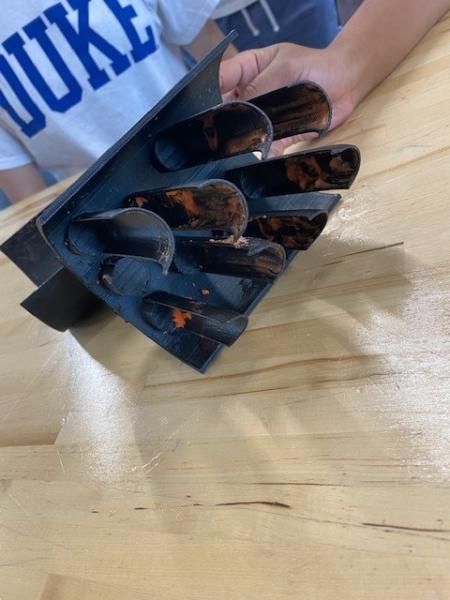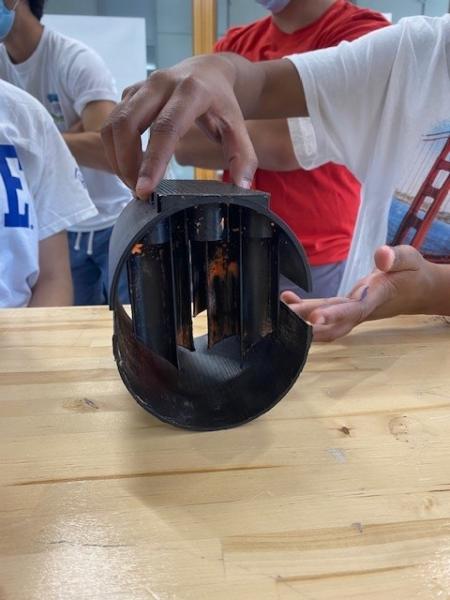Each day, millions of Americans pour fats, oils, and grease down their sinks. This happens because people are unaware, forgetful, or don’t worry about their actions. As residential wastewater lines combine to a large trunk line, fats, oils, and grease (FOG) combine to produce “plugs” in the system. Restaurants are required to have FOG traps, because of their high throughput of those materials. However, residences do not have them, and it would be expensive to install one at each source. These traps use the difference in density of water and FOGs to float the FOG clumps and then remove them from the system.

Currently, traps are not designed or installed on residential sanitary sewer systems. Yet, every year, sanitary sewer lines are clogged with these FOG plugs. This is particularly pronounced where the line flattens out (i.e., no incline) and when the water flow is low. These plugs cause significant back-ups and overflows, causing inconveniences to many families and communities. Often, back-ups will occur frequently at the same location. Thus, there is a need for a FOG trap for trunk lines for sanitary sewer systems that can be installed in locations where back-ups frequently occur.
The team was tasked with creating a solution that was durable, cost-efficient, and easy to reproduce. During the initial brainstorming process, the team was not very optimistic about one of their ideas -- the "clump-stick" solution. However, as a testament to the engineering design process and remaining open-minded, this idea hit the mark on all design criteria. The team moved forward iteratively prototyping and testing this solution, which involved protrusions into the sewer line that successfully gathered clumps of FOG from the flowing water.

When asked to identify what surprised her about her experience on the project, team member Shannuel Lamptey says "The whole entire thing! I never imagined doing this in college". Michelle Riemann was drawn to the uniquenes of the project, "This project was very hands-on. Engineering is solving problems that don't necessarily have a solution".
Without a clear end point, the team kept open lines of communication giving feedback to one another on each prototype. In the end, they are beyond pleased with the final product, and very proud to have a functioning product that can be delivered to the client. The final prototype was 3-D printed from titanium.